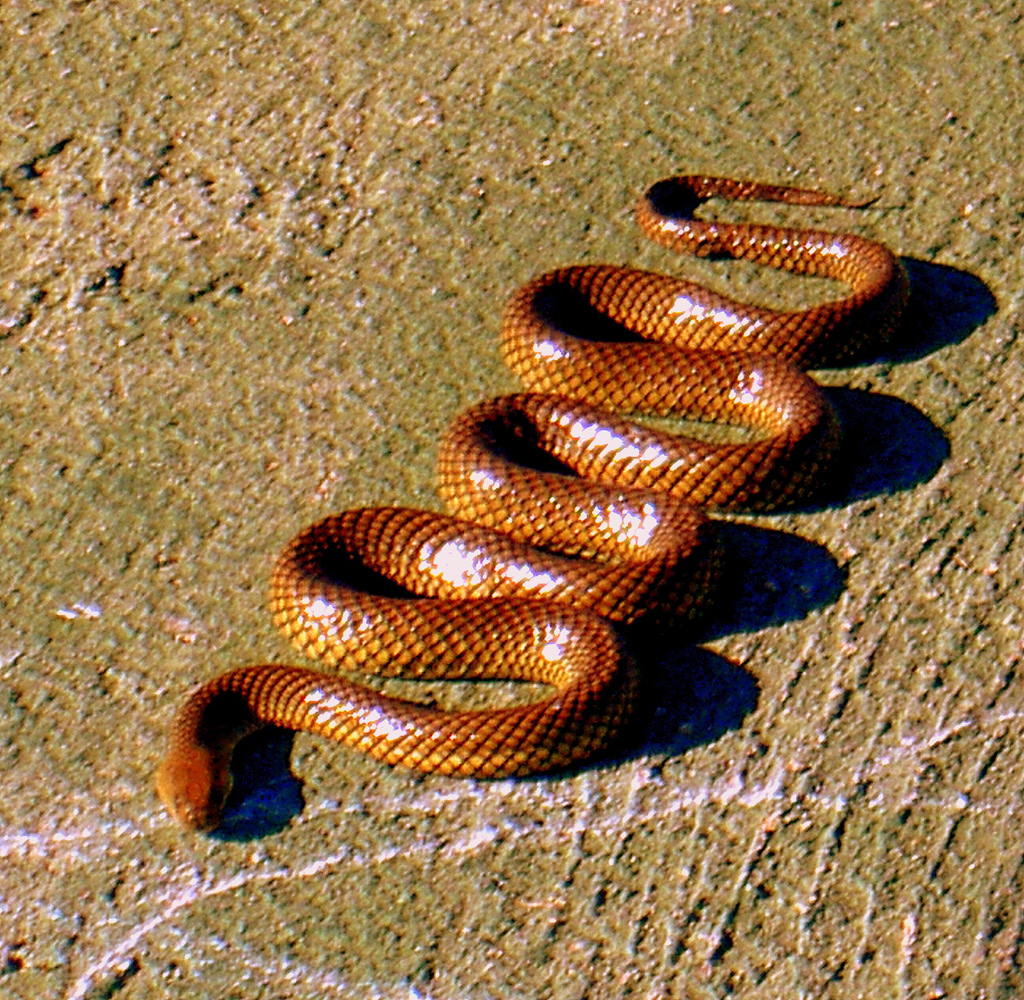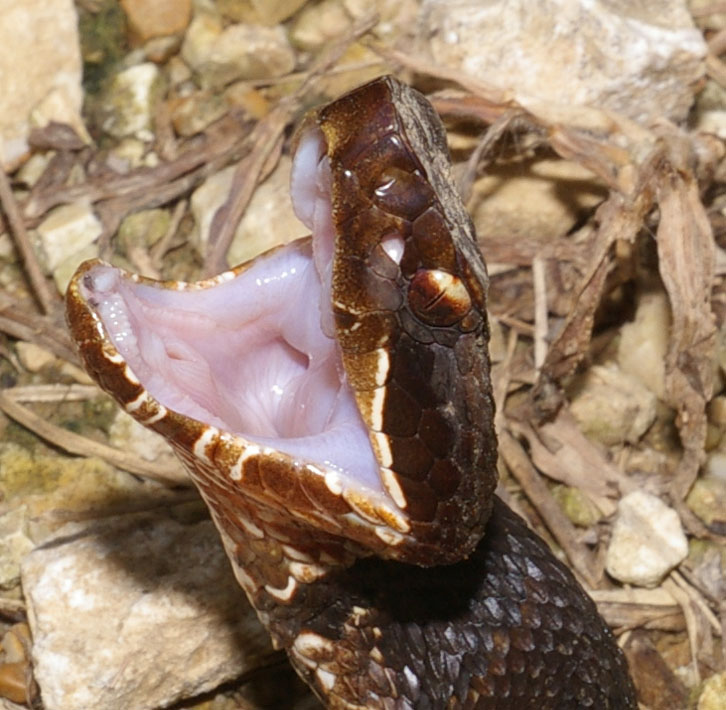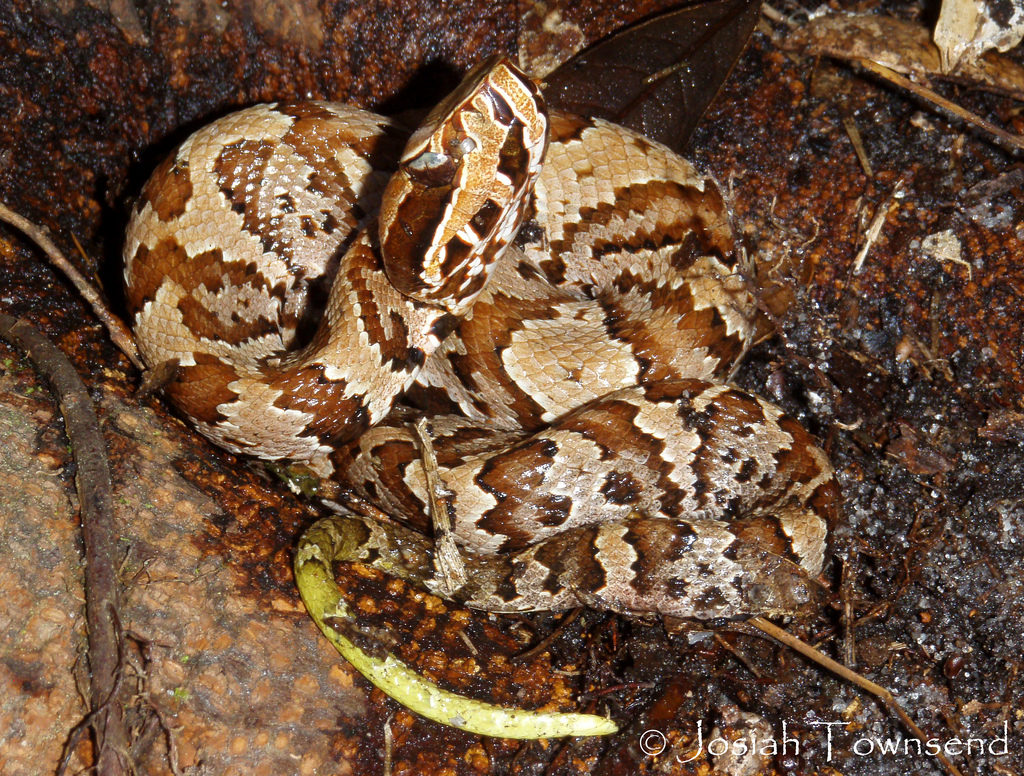Adaptation
The things that make us who we are, are things that have been passed down through generations of your ancestors. Now I’m not talking about the things we love, but the things that allow us to succeed as the top predator in our ecosystem. These traits allow us to adapt to the environment and have for centuries, and like us, the Western Cottonmouth is no different.
From the time of their birth, the Western Cottonmouth is adapted to survival. From the get go, the snake appears a certain way on its skin so as to allow it to blend into the environment. This is called camouflage. This ability allows the snake to avoid predators (see nutrition for a list of predators) and also to stalk its prey and strike with its next adaptation. But before that can you find the snake in the picture below? (the answer can be found on the bottom of the page.)
The snake is special, there is no doubt of that, but what makes it special in particular? To understand that, you must look at its evolution and the group of snakes that is belongs to and that is the family Viperidae. This is the family of vipers and the sub family Crotalinae. This family, and sub family more specifically, is special in that the snakes found within this group have a specialized organ located between the eyes and the nose. This organ is extremely helpful to the snake in that it allows the snake to sense the heat of other animals around it. Imagine if you can, looking at a normal image and then looking at the same image but through a thermal imagining camera. The thermal image is what the snake would see because of this pit. This organ allows the snake to hunt more efficiently in its environment.
Can you find the pits on this snake?
Ok, well the snake has the ability to locate its prey, but that takes a lot of energy and the snake is cold blooded so it needs to be smart about moving around. It could run the risk of moving to an area of lots of sun and little shade, risking the possibility of overheating. But, what if you could some how attract the prey and make it come to you? Well luckily the young cottonmouths are born with a tail that is yellow. Yes, yellow! This yellow tail may be a death sentence. If the predators of young cottonmouths saw this, they would know where the snake was, but it doesn’t seem to be like that. Instead this adaptation allows the cottonmouth to attract some of its prey, the frogs in particular, to it while it waits in the “brush” concealed by its camouflage until the frog is within striking distance, and then it strikes!
But then how is it supposed to catch and kill the prey? Does it strangle it? Does it have teeth that will rip and tear? No, this snake and other snakes in the Viperidae family have developed over time the ability to use a toxin to kill its prey. The toxin is a huge benefit to the snake because using a toxin that will kill your prey for you means all the snake has to do is strike, bite the animal plunging the two hollow fangs through the skin and inject a portion of the venom stored in the venom glands and then wait. Most animals can be struck and injected while being held in the snake’s mouth, but some animals may fight back, in which case the snake will strike to inject, and then wait for the prey to succumb to the venom.
On a final note, the Western Cottonmouth like all snakes, is cold blooded which means that the snake does not regulate its own body heat. Instead it uses the heat provided by the environment. So often times you can see a snake basking in the sun like the photo below. This is common.

One of the many things that make this animal such an effective predator is the adaptation for killing its prey; venom. Venom allows the organism to strike and then retreat waiting for the prey to cease and die. To learn more about this interesting cocktail of compounds visit the Venom page.
ANSWER: In the photo there is no snake there, but if there was it would be extremely hard to detect because of its adaptation.

